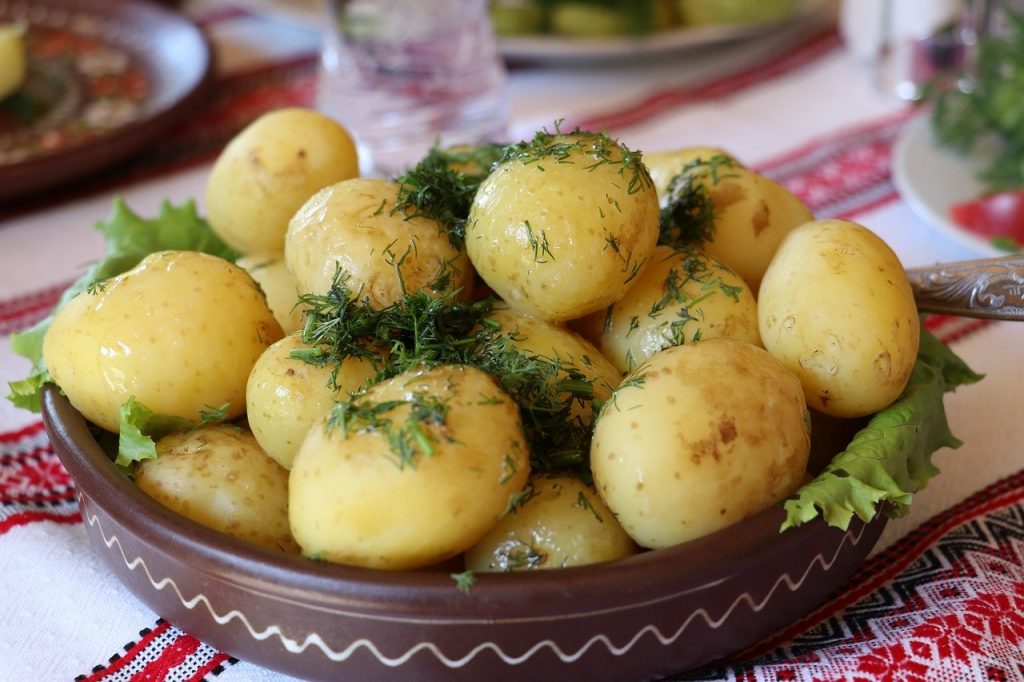[Article updated on 19/09/2023]
Suffering from excess weight, Michel Montignac (1944-2010) set about analyzing several scientific articles dedicated to nutrition. Then, he carried out experiments with various experts and scientists before publishing works dedicated to weight loss and developing a diet that bears his name. He experimented on himself with the nutritional principles of his method and lost around ten kilograms quickly in 90 days. What is now commonly called the Montignac diet is, in fact, a new dietary approach which results in new eating habit. This method of weight loss is associated with original concepts such as glycemic indexes of foods and food combinations.
The principles of the Montignac diet
Limiting calories and the quantity of foods consumed are the foundations of many diets. Unlike these diets, that of Montignac is not based on a limitation of the food consumed. It is based on the correct selection of foods or on the dissociation of foods and on the concept of glycemic index or the exclusion of foods with a high glycemic index (GI).

The Montignac diet is a nutritional system that suggests a change in eating habits with the aim of losing weight and maintaining a healthy body weight. To do this, Montignac promotes nutritional principles based on a balanced diet and based on the selection of foods belonging to all food groups. These are essentially foods that can induce metabolic reactions that can inhibit weight gain. This selection is also based on the glycemic index of foods.
Thus, the Montignac diet is a dissociated diet which advises against the combination of sugars (carbohydrates) and fats (lipids) during the same meal. It is therefore prohibited to combine certain types of foods during the same meal. Lipids and carbohydrates must be ingested separately while eliminating foods with a high glycemic index.
For Montignac, foods with a high glycemic index contribute to the production of insulin. This excessive secretion of insulin linked to sugar levels is responsible for fat storage and obesity.
This is why, for weight loss, it is advisable to favor the consumption of carbohydrates with a glycemic index of less than 50 and meals containing proteins, lipids and carbohydrates with a low glycemic index. Therefore, hyperglycemic foods should be avoided.
How does the Montignac diet work?
The increase in the level of glucose in the blood promotes the production of insulin. For Montignac, this hormone is considered to be responsible for excess weight. To achieve weight loss, insulin levels must be reduced. Therefore, to achieve this objective, it is appropriate to consume foods that do not induce an increase in blood sugar levels, consequently reducing insulin production.
It is therefore necessary to avoid foods with a high glycemic index which cause high insulin secretion. Thus, in terms of the Montignac diet, certain foods are selected, in particular those which have a low glycemic index. Proteins which keep you satisfied for a long period of time, thus facilitating weight loss, are also favored, as are foods rich in good fats which reduce bad cholesterol (LDL) and increase good cholesterol (HDL). The intake of fiber, allowing the maintenance of satiety, is also recommended in this diet.
As part of the implementation of the Montignac diet, certain foods are authorized, others are less recommended. Other foods should be eliminated if possible.
The Montignac method consists of two phases
Phase 1
The first phase aims to achieve weight loss. It is maintained until the subject achieves the desired weight loss. To do this, during this phase, the subject is invited to:
- eat permitted foods, especially those with a glycemic index of 50 or less;
- eliminate hyperglycemic foods or foods with a high glycemic index, concentrated sugars (with the exception of fructose);
- eat foods in the right combinations;

Phase 2
Phase 2 must be followed for life in order to maintain the desired weight. It aims to consolidate the result of the first phase. To do this, the principles of phase 1 must be respected. The subject must then continue to select foods or carbohydrates according to their glycemic index while avoiding sugars and foods with a high glycemic index. Food combinations are no longer mandatory.
The typical day of the Montignac diet
Typical day phase 1
BREAKFAST
- Sugar-free jam;
- wholemeal bread;
- hot drink: tea or coffee without caffeine or sugar.
LUNCH
- raw vegetables with olive oil;
- meat or fish ;
- green vegetable ;
- yogurt (plain soy).
SNACK
- fruit and dairy (a glass of skimmed milk).
DINNER
- Raw vegetables or vegetable soup (without starches);
- mushroom omelette ;
- green salad ;
- 0% white cheese.
Typical day phase 2
BREAKFAST
- Fruit ;
- wholemeal bread;
- plain white cheese.
LUNCH
- Cooked vegetables ;
- meat or fish ;
- dessert: fruit or dairy
DINNER
- vegetable platter ;
- plate of pasta with tomato sauce;
- Fruit.
The advantages of the Montignac diet
- The Montignac diet allows relatively sustainable weight loss without extreme restrictions and without too much deprivation.
- The Montignac diet is easy to follow and compatible with a social life since it allows you to consume the dishes and desserts served in restaurants.
- Eating foods rich in fiber and protein quickly induces a feeling of satiety and regular weight loss.
- Food dissociation contributes to better digestion and promotes a feeling of digestive comfort.
- The Montignac diet ensures protection of the cardiovascular system while consequently reducing the risk linked to cardiovascular pathologies. It may also reduce the risk of developing diabetes in healthy individuals.
- There are no restrictions in terms of the quantity of foods allowed or calorie counting. So you can eat to your satisfaction. No need for a effective appetite suppressant. There is no category of foods to exclude, only consideration of the glycemic index of foods.
- You can eat as much as you want, as long as you choose the right foods and opt for the right combinations.
The disadvantages of the Montignac diet
- The first phase of the diet is quite restrictive with foods to exclude and prohibitions on food combinations.
- We must fear an increase in cholesterol levels, in particular, the high consumption of fructose or the feeling of fatigue with the sharp reduction in the consumption of carbohydrates.
- The Montignac diet requires basic knowledge of the different food categories in order to make the right food combinations and avoid bad food combinations.
The effectiveness of the Montignac diet
As part of the Montignac diet, foods are chosen based on their glycemic index. This slimming diet consists of consuming more foods with a low glycemic index in order to promote fat loss. By consuming these said foods, it is possible to lose weight quickly. Thus, by favoring foods with a low glycemic index, the Montignac diet promotes weight loss without resorting to weight loss products.
This diet also contributes to weight loss by promoting the maintenance of satiety for a long period thanks to the intake of protein and dietary fiber. According to the author It allows you to lose weight quickly and sustainably without counting calories. The loss of kilograms is on average 4 to 5 kg per month with variation depending on the individual.

The duration of the Montignac diet
The Montignac diet begins with a first phase which aims to lose weight without fat burners. It allows you to lose very specific kilograms of body mass according to previously set objectives. This first phase can last from one to several months until you reach your weight loss goal. It ends when you reach the ideal weight or desired weight. Then begins the second phase which is for life. This second phase, which aims to stabilize weight, must be continued throughout the rest of life.
Special menus and recipes for the Montignac diet
Example of 4-day menu (phase 1)
| Morning | Noon | Evening | |
| 1st day | Fruit Wholemeal bread Sugar-free jam Light coffee, Yogurt 0% | Large salad consisting of tuna, olive, tomatoes, chocolate, water or tea | Vegetable (boiled artichoke) + lipid (olive oil, Fruit, Drink |
| 2nd day | Fruit Soy yogurt Wholemeal bread Sugar-free jam, Drink (tea) | Leek + vinegar + oil, Cheese omelette Green salad 0% yogurt Drink (water) | Spaghetti Montignac low GI with tomato coulis Drink (herbal tea) |
| 3rd day | Fruit Yogurt 0% Oat flakes Soy milk Sugar-free jam Drink (herbal tea) | Vegetable salad with olive oil, Thin slice of chicken Fresh cheese from dripping raw milk, Fructose Drink (tea) | Vegetable (soup)Slice of white fish (cod)Basmati rice |
| 4th day | Fruit, whole grain cereals, whole grain bread, 0% white cheese, decaffeinated coffee or light tea. | Raw vegetables in olive oil, fish + vegetables, salad and cheese, non-carbonated water. | Vegetable soup (without starches) with a knob of butter and eggs with green salad. A natural yogurt |
Example menu: 3 days phase 2
| Morning | Noon | Evening | |
| 1st day | Fruits Wholemeal bread + sugar-free jam low-fat margarine Decaffeinated coffee Skimmed milk | avocado with olive oil and vinaigrette Beef steak with green beans Cream Beverage ; water | Vegetable soup Mushroom omelette Green salad 0% white cheese. Drinks: water |
| 2nd day | Fruit cereals wholemeal bread light tea | Vegetables, poultry meat, Cheese Chocolate | Chicken (soup) + vegetables Baked fish, Yogurt, Drink |
| 3rd day | Fruit, Oatmeal and Nuts Decaffeinated Coffee | Raw vegetables with vinaigrette and olive Animal protein steamed broccoli, Cheese | vegetables (no starches) fish, Green salad Cottage cheese 0%, Drink |

Opinion of health professionals on the Montignac diet
For health professionals, the claims associated with the Montignac diet have no scientific basis, they are not supported by scientific evidence. No scientific evaluation can confirm the impact of food dissociation or the ban on the combination of carbohydrates and lipids on weight loss. This food dissociation is therefore not essential to achieve weight loss goals.
To know how to lose weight, it is not necessary to dissociate from food. The weight loss that occurs could result from a low calorific intake which may be the consequence of an elimination of certain carbohydrates in the diet. This diet can lead to a low intake of carbohydrates, but also of vitamins and minerals with the elimination of certain fruits and vegetables with a high glycemic index. It can cause a dietary imbalance. Also, for health professionals, the role of sport in weight loss and weight maintenance is not favored in this diet, it is even underestimated, or even neglected.
Consumer reviews
While some Internet users appreciate the Montignac diet, they consider it effective, citing cumulative weight loss after a few weeks. Others, on the other hand, express a certain disappointment because they were not able to lose weight by following the principles of this diet. Consumers highlight the difficulties experienced when implementing this regime.
Indeed, this diet requires the basics to better distinguish food categories and knowledge of foods to eliminate or with a high or low glycemic index. This constant reference to this classification of foods according to their glycemic index is a little tedious for some consumers.
To better understand the Montignac method, it may be necessary to purchase books by Michel Montignac. This is why consumers find this diet a little expensive, since in addition to purchasing the books, you have to subscribe to a paid subscription to have access to recipes, advice and coaching.
